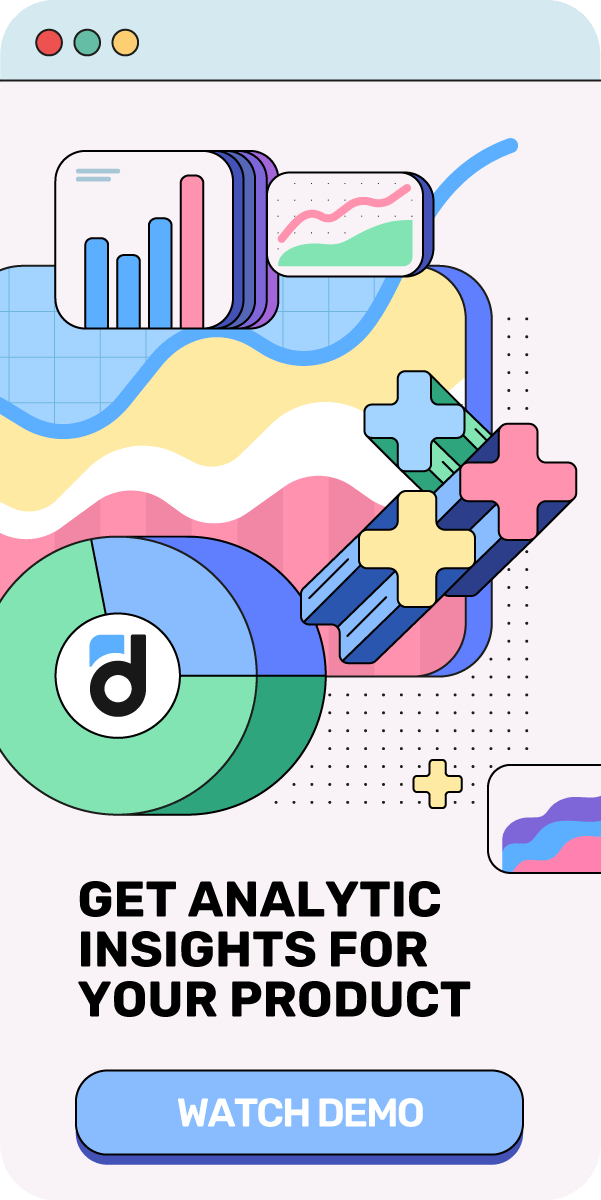You're aware of what the funnels are needed for - it is the most important analytical tool that shows how users perform a specific sequence of events. The funnels help to measure the conversion of all steps to find the problem areas in your product. And after these bottlenecks are eliminated, it is again the funnel that will help you understand how your changes affect user behavior.
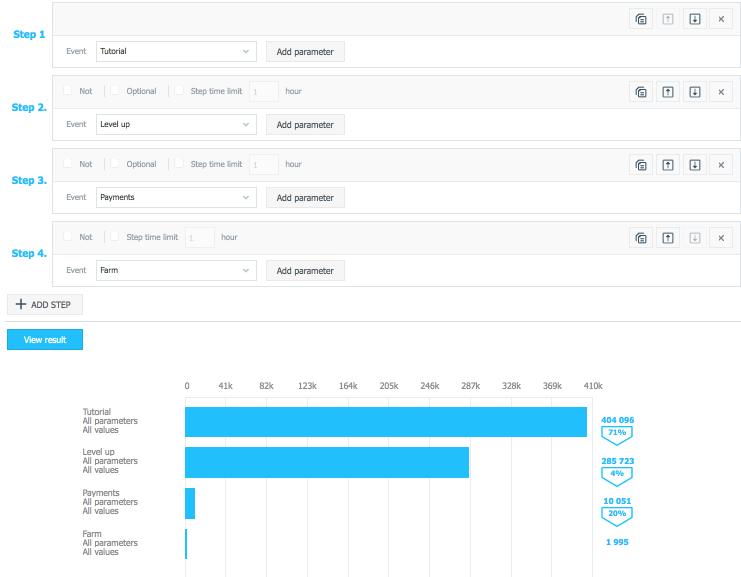
Explanation for the picture: a standard funnel of 4 steps: passing tutorial, level up, payment, farm entrance.
We at devtodev, paid special attention to the improvement of this particular report: now it has more features, which significantly strengthened the functionality and made it more flexible.
Performing and NOT performing a step
If you analyze the purchase, you probably want to know how many people have bought the product, right?
But in practice, it will be useful to analyze not only the conversion into the purchase, but also the abandonment of the purchase. This funnel will allow to see those who went through all the steps, but in the end did not make a purchase. And if we analyze these users by segment, parameter values, it will be possible to isolate the problem in more detail and to understand the user's reasons for refusal from the purchase, and then remove it quickly and efficiently.
Let's say your payment gateway does not let payments of more than a thousand rubles per transaction, and with the help of such funnel and event parameter values you will immediately be able to understand where and what exactly was the problem. Ain't that cool?
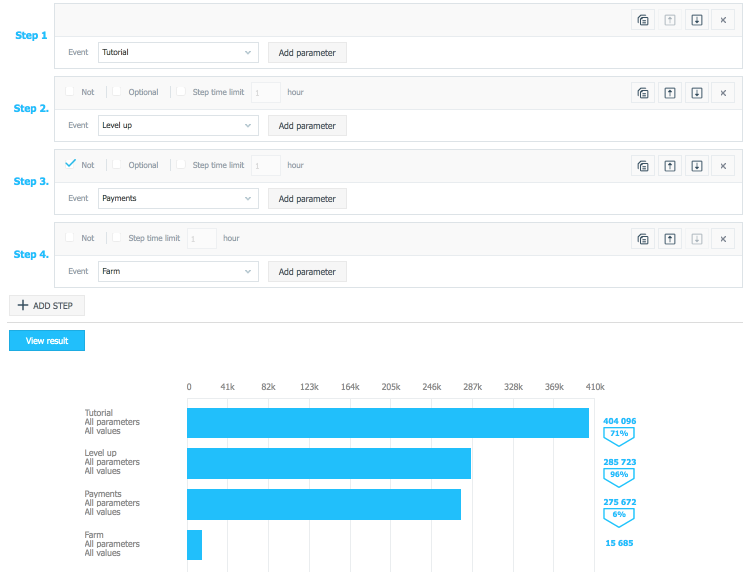
Explanation for the picture: The Payments step is checked "Not": those who passed the tutorial and leveled up, but did not make the payment fall into the funnel.
Optional step
User behavior is not always linear, that is, the chain A -> B -> C -> D doesn't always look like this, for example, step B might be missing. If you want to build a standard funnel and reduce the influence of step B in it, then you should build a A -> C -> D, or build A -> B -> C -> D
Now devtodev makes it possible to build A -> B* -> C -> D!
The difference is that step B becomes optional, and starting from this step, the funnel splits into two.
You build two funnels in one and immediately compare the conversion, taking into account this step without it: it saves you time and allows you to quickly find deviations in the behavior of the players.
Let us consider an example: a user logs in, goes into a battle, loses it and gets upset. And then immediately goes to the game store to buy a few chests and get back into the fight already with better resources.But is it necessary that the user visits the shop only if the battle is lost? Are there any players who go to the store, regardless of the results of the battle? Previously, to answer this question, it was necessary to build two funnels: for all users and for losers separately. Now you can simply mark the step "lost battle" as an optional, thus, two funnels will be built in one. You both save time to create a report and get the result in a single report, rather than in two different ones.
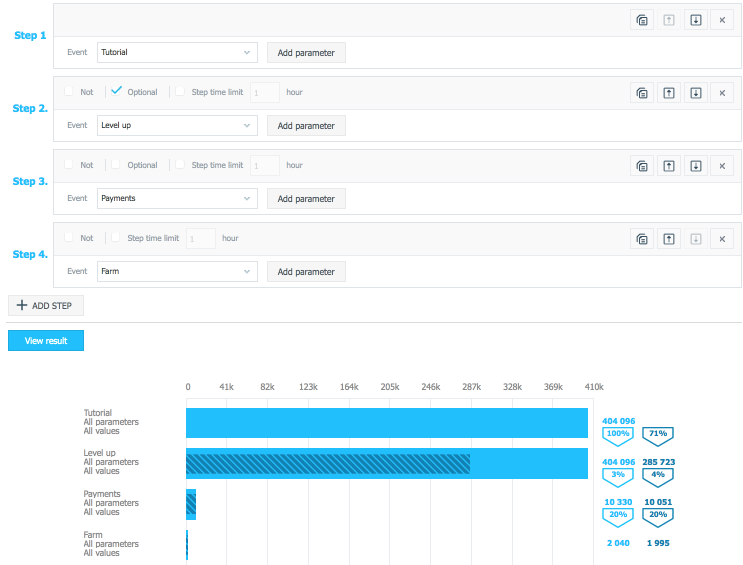
Explanation for the picture: Step Level Up is marked as optional, since this step the funnel is split into two: with the Level Up or without.
Time limit for performing step
Users are divided into two categories: some may perform actions (such as making purchases) in the app or on the website immediately, others can pull this indefinitely. To separate them one from another, we at devtodev, decided to introduce a time limit for performing a step.
With this limitation, you can specify, for example, a funnel, into which those who was registered before the first purchase for an hour, a day or a week will fall.
How time limit for performing the step applies to the games: is possible to build a funnel of users who shifted to pvp immediately after passing the training phase, and compare these users with those for whom it took more then a day. With the help of this tool it is possible to more thoroughly define the concept of onboarding (activation of users), as well as to understand how fast people are moving from one step to another (when developing the application, you have assumed that they would do it the same day and the same hour, right?). Thus, you can help users to solve their problems, send them notifications, as well as improve UX of the application along with maintaining customer loyalty.
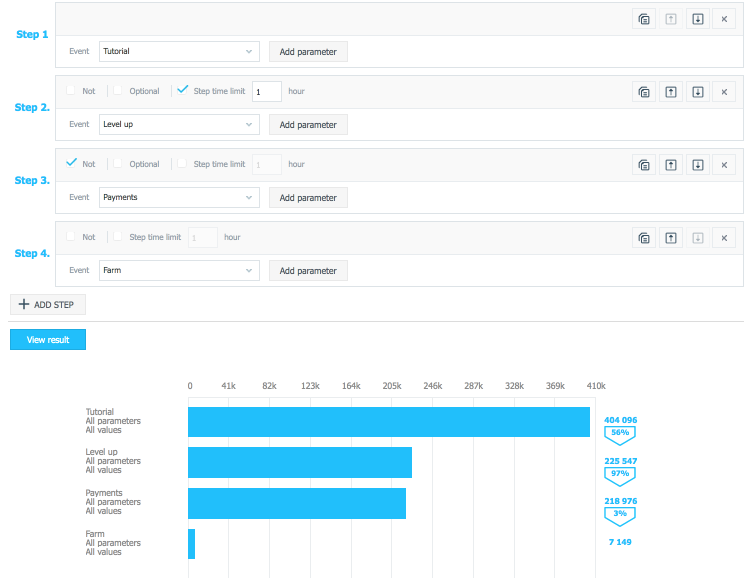
New features would be a great delight for professionals: all the functions are indispensable for people versed in analytics. But they are also necessary for beginners for a more detailed understanding of the players behavior.
And one more news that will make the quality of reporting close to perfection: instead of 10 steps it is now 20 steps in the funnel report, so you can specify a longer sequence of events performed (and now even NOT performed!) by the player, and as a result, finding bottlenecks will become more efficient.











































































































































































































































































































































